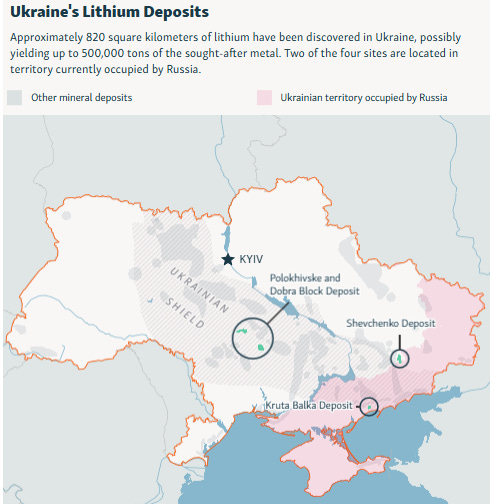Russia Seizes Key Lithium Site: Ukraine’s War Edge Erodes
Discover how Russia’s quiet takeover of key lithium reserves in Donetsk shatters U.S. mineral deals and leaves Ukraine dangerously exposed.
The seizure of Ukraine’s Shevchenko lithium deposit by Russian forces, while modest in geographic extent, illuminates a foundational truth about the structural mechanics of contemporary warfare: that control of territory, especially resource-rich territory, functions as a concrete instrument of leverage in the international system. This leverage is derived from the physical command of assets that hold tangible and enduring value in international markets.
The Shevchenko deposit, although covering just over 100 acres, contains lithium of exceptional grade and high ore concentration. These characteristics render it disproportionately important within global supply chains for energy storage, electric vehicles, and advanced military applicaitons. Its capture, therefore, is a clear disruption of Western strategic planning and an implicit recalibration of Ukraine’s value to its external patrons.
That this development recieved no significant response from Washington, despite its direct relevance to a bilateral minerals agreement signed earlier in the year, underscores a deeper reality: Ukraine’s geopolitical worth to the United States is not intrinsic, but contingent, predicated on its capacity to offer exploitable, securable resources.
As Ukraine’s military loses ground in the east, the very premises underpinning the U.S.-Ukraine minerals agreement begin to disintegrate. The deal, initially presented as a long-term strategic partnership aimed at bolstering U.S. access to critical minerals outside of Chinese control, was always vulnerable to battlefield dynamics. Its operational viability depended entirely on Kyiv’s continued control over the resource base.
Critically, the agreement contained no enforceable security guarantees nor mechanisms for safeguarding assets in contested zones. The omission was a calculated decision reflecting Washington’s reluctance to escalate its material or military obligations. The structure of the agreement, rooted in economic exchange but devoid of defense assurances, was inherently fragile in the face of shifting frontlines. Russia’s occupation of the Shevchenko site nullified the core logic of the accord. The transaction is being stripped of its subject, revealing that strategic alignment based on resource access alone is fundamentally unstable when not backed by force-projection or security guanratees.
This event is emblematic of a broader shift in the strategic balance of the war, where Russia (not Ukraine, and not the United States) has seized the initiative, dictating the tempo and geography of conflict. Russia’s operational model, grounded in large-scale attritional warfare, leverages its demographic depth, relatively insulated domestic economy, and vertically integrated defense sector. This model, while costly, is sustainable in structural terms.
Ukraine, by contrast, confronts declining manpower, logistical fatigue, and acute shortages in key weapon systems. These shortfalls have been exacerbated by the recent curtailment of U.S. military assistance and Europe’s limited capacity to compensate. Ukrainian forces now operate under strategic constraints that reduce their capacity to launch meaningful offensives; they are confined to positional defense and tactical disruption, not the recovery of lost ground. The battlefield has thus ceased to be a space of possibility for Kyiv and become instead a crucible of attrition that steadily diminishes its negotiating leverage.
In Washington, the Trump administration’s muted response to the Shevchenko seizure must be understood as
Keep reading with a 7-day free trial
Subscribe to Post-Liberal Dispatch to keep reading this post and get 7 days of free access to the full post archives.







